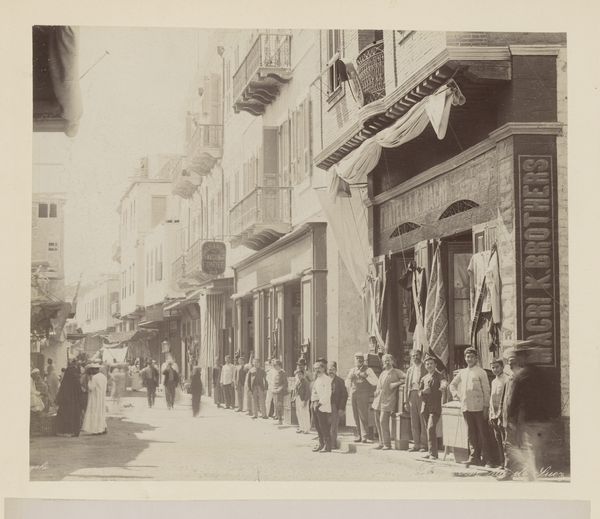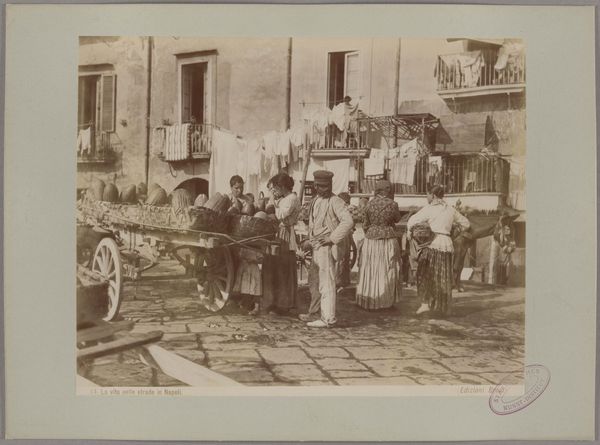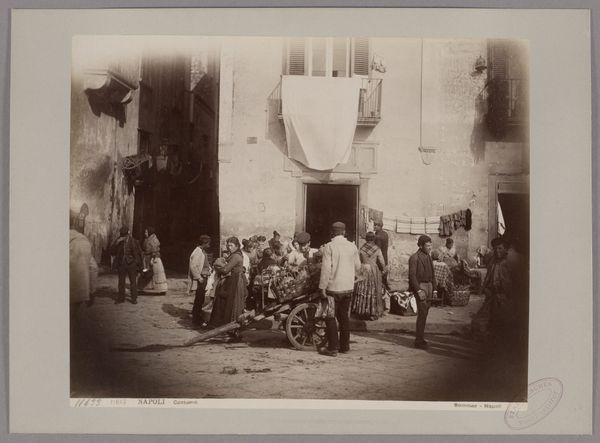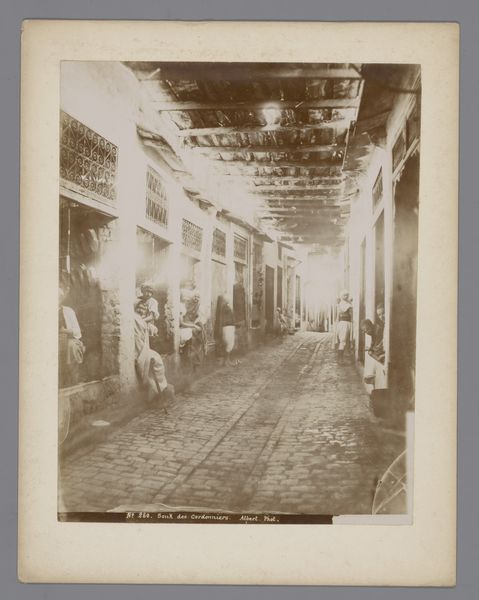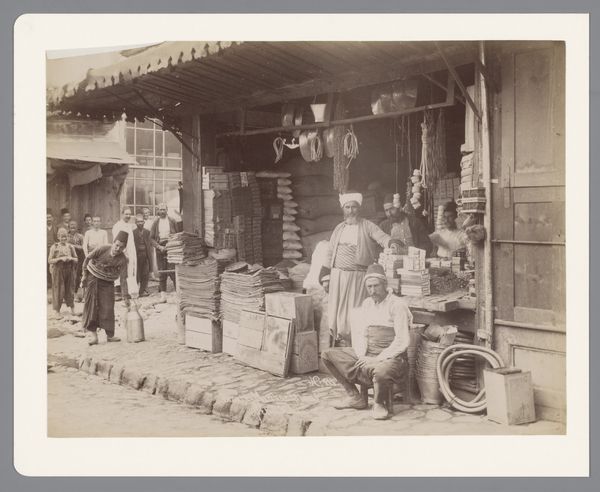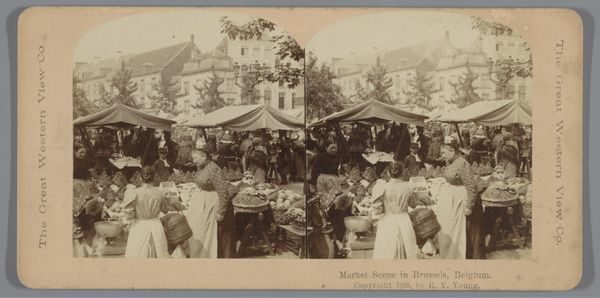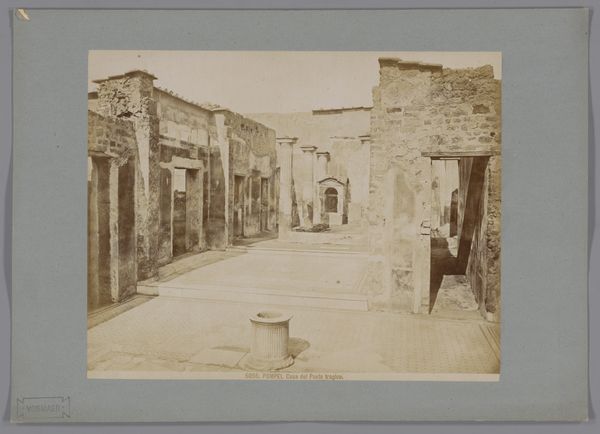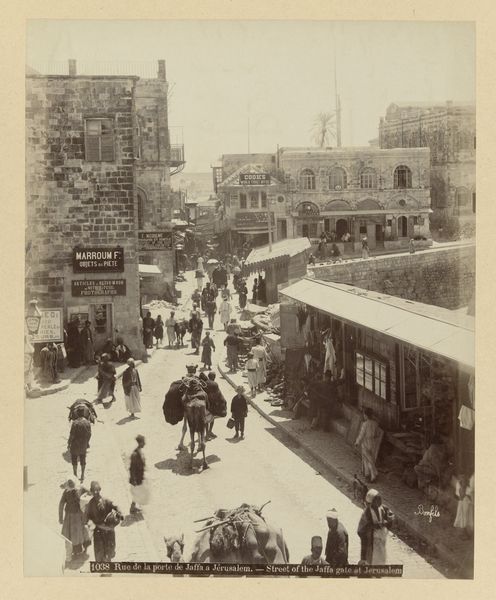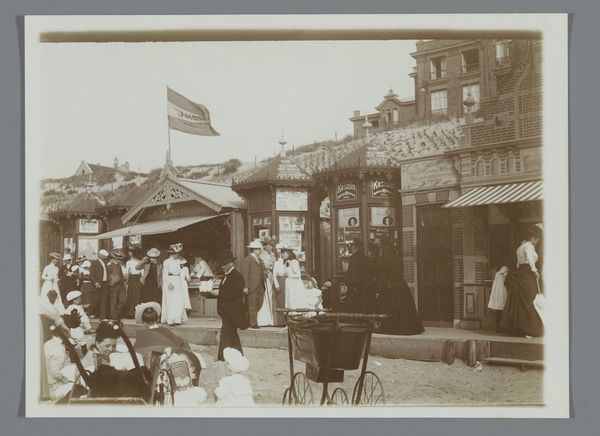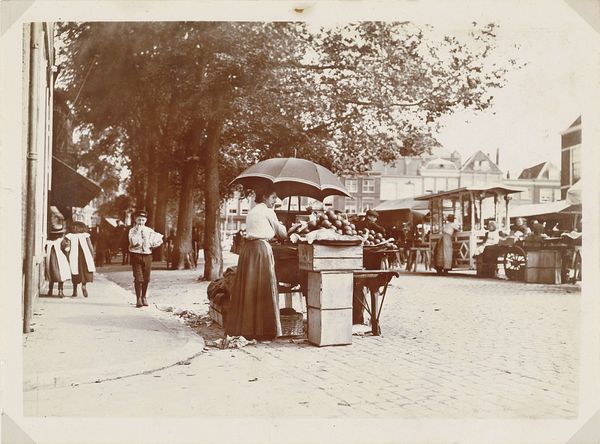
print, photography, collotype
# print
#
photography
#
collotype
#
ancient-mediterranean
Dimensions: height 88 mm, width 177 mm
Copyright: Rijks Museum: Open Domain
Editor: This is a collotype print called "Smalle straat met winkels in Jeruzalem," which translates to "Small street with shops in Jerusalem." It's dated sometime between 1900 and 1906. The street feels incredibly busy and dense. What strikes you about this piece? Curator: What immediately catches my attention is its purpose. This wasn't just art for art's sake. The collotype process allowed for mass reproduction. How do you think images like this circulated at the turn of the century, and what purpose did they serve? Editor: It seems almost like a postcard, but I guess it could be used to document things? Curator: Precisely. This image served to build and disseminate a particular vision of Jerusalem for a Western audience. Note the specific details included: the market's bustle, the architecture and even the people are on display. Do you see how it reinforces the "exotic" otherness often associated with depictions of the Middle East at the time? Editor: I do. I hadn’t thought about that. The photographer is showing Jerusalem rather than letting people experience it themselves. And the way it’s captured in print gives it this feeling of authenticity even though it is presented through a particular lens. Curator: Exactly. By understanding the context in which it was created, reproduced, and circulated, we can unpack its intended messages and unspoken assumptions. The image, initially appearing as just a ‘snapshot’ of a moment becomes much more meaningful. Editor: This has made me think so differently about photography and its role in shaping public opinion back then. Now I am wondering who the photographer was, and where this was presented... so much more to investigate! Curator: Indeed! It demonstrates the power of art as a form of documentation and propaganda, both conscious and unconscious. There's so much more to see when you consider historical context!
Comments
No comments
Be the first to comment and join the conversation on the ultimate creative platform.
